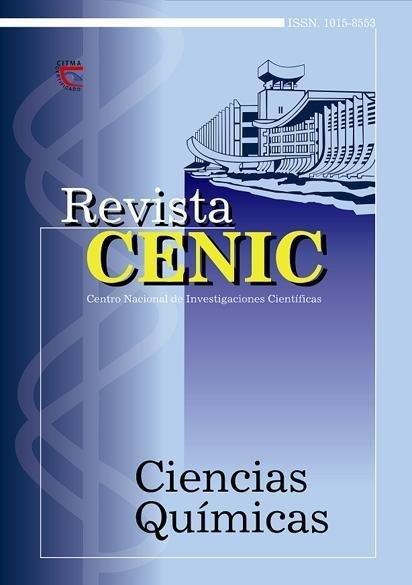Estudio comparativo de tres oxazolinas como inhibidores de la corrosion (11 parte).
Abstract
A comparative study about the possible inhibitor effect on atmospberic conditions of three compound of the family of 2-oxazoline
using modero electrochemical techniques was carried out. These compounds were obtained through non conventional cbemical synthesis using microwaves. The compounds studied were 2-bencyl-4,4-dibydroximethyl-2-oxazoline; 2-heptadecenyl-4,4-bis(estearoiloximethyl)-2-oxazoline, 2-heptadecenyl-4,4-dibydroximethyl-2-oxazoline. Oxazolines were disolved in basic oil at 70ºC at different concentrations. These concentrations were taken keeping in mind the ¡Ítevious results. AISI 1020 steel \.Vas used as electrodes. Several test methods were used: accelerated (neutral salt spray chamber, S02 atmosphere, heat-humidity chamber)
and electrochemical (polarization curves, electrochemica1 impedance curve and potential vs time). The results show that 2-heptadccenvl-4 4-dibydroximethyl-2-oxazoline at l .0% in weight, have better properties as corrosion inhibitor of AISI-1020 steel.
These is due because the oxazoline group ai1d t'wo hydroxi-methyl groups are able to make a passive film by adsorption of the compounds on the metal surface, this effect is reinforced with the hydrocarbon chain oriented toward the aqueous phase. The covering and water-repellen! characteristics of the film ensure protection against corrosion.

Downloads
Published
How to Cite
Issue
Section
License
Copyright (c) 2003 Copyright (c) 2003 Revista CENIC Ciencias Químicas

This work is licensed under a Creative Commons Attribution-NonCommercial-ShareAlike 4.0 International License.
Los autores que publican en esta revista están de acuerdo con los siguientes términos:
Los autores conservan los derechos de autor y garantizan a la revista el derecho de ser la primera publicación del trabajo al igual que licenciado bajo una Creative Commons Atribución-NoComercial-CompartirIgual 4.0 que permite a otros compartir el trabajo con un reconocimiento de la autoría del trabajo y la publicación inicial en esta revista.
Los autores pueden establecer por separado acuerdos adicionales para la distribución no exclusiva de la versión de la obra publicada en la revista (por ejemplo, situarlo en un repositorio institucional o publicarlo en un libro), con un reconocimiento de su publicación inicial en esta revista.
Se permite y se anima a los autores a difundir sus trabajos electrónicamente (por ejemplo, en repositorios institucionales o en su propio sitio web) antes y durante el proceso de envío, ya que puede dar lugar a intercambios productivos, así como a una citación más temprana y mayor de los trabajos publicados (Véase The Effect of Open Access) (en inglés).













